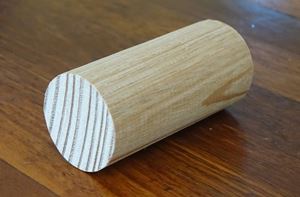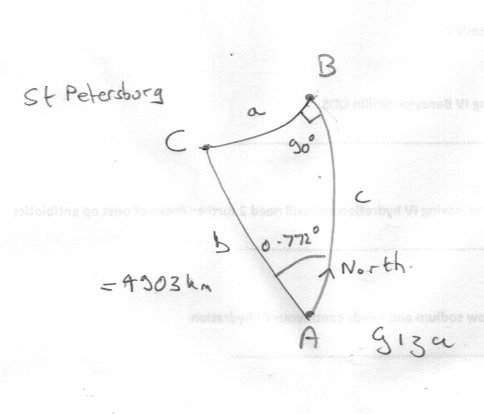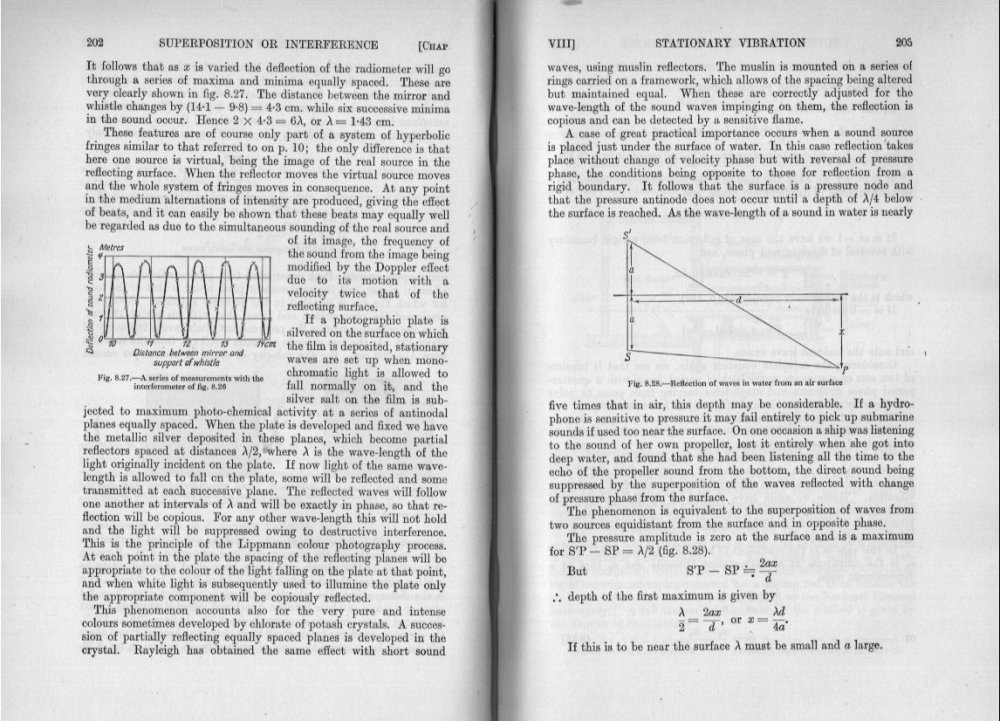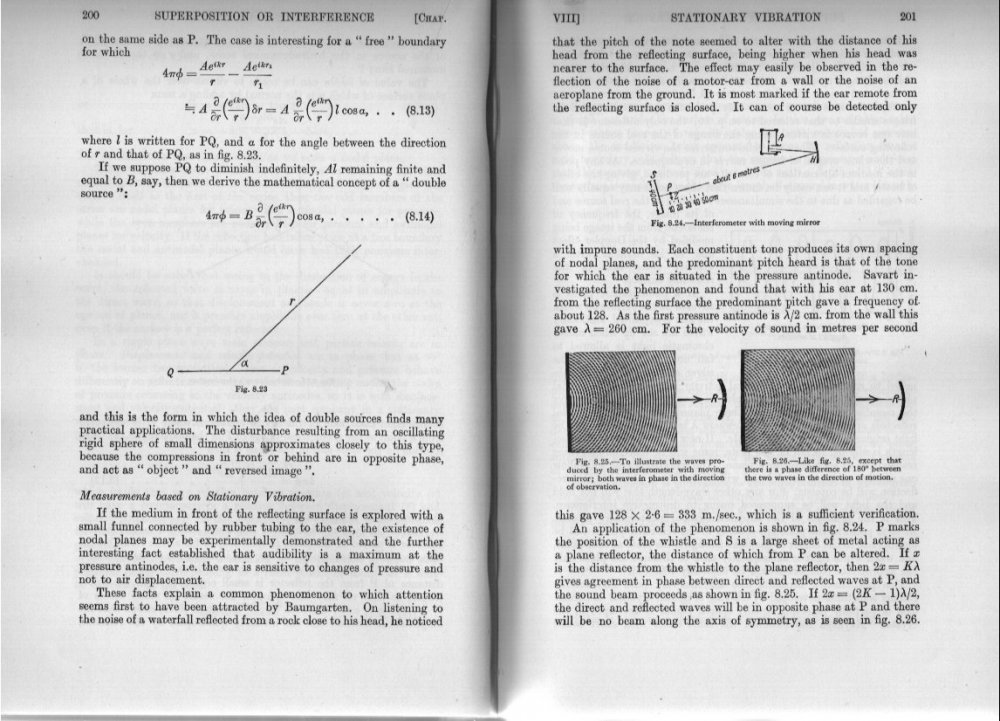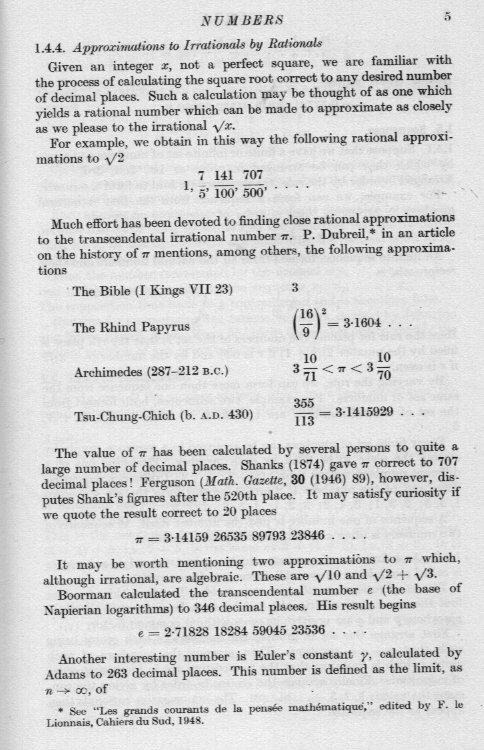-
Posts
18316 -
Joined
-
Last visited
-
Days Won
104
Content Type
Profiles
Forums
Events
Everything posted by studiot
-

The geometric design of the Giza pyramids
studiot replied to robincook's topic in General Philosophy
I have learned from this response that you are not interested in an objective discussion of known facts to sort the supposition from the supportable. -

Create a current from emitting coil like em wave
studiot replied to fredreload's topic in Speculations
Think about it before you post such rubbish. A wave has maxima and minima. This picture has neither. -

The geometric design of the Giza pyramids
studiot replied to robincook's topic in General Philosophy
Just to see how wrong this is, here is a calculation using spherical triangles. This distance from Giza to St Petersburg is 4903 km and the circumference of the earth is 40075 km The longitude of the Giza pyramid is 31.1325oE and the longitude of StP is 30.3609oE a difference of 0.772 degrees. So if we let Giza be vertex A and StP be vertex C of a spherical triangle, and proceed in the direction of StP 0.772o W this gives us angle A of the spherical triangle. Now the perpendicular from C to the line due north through A strikes this line at B, giving angle B of 90o. Side AC is the distance from Giza to StP and subtends an angle to the centre b = 360 * 4903/40075 = 44.044o. So we have two angles and a side of the spherical triangle ABC, which is enough to solve it by the sine rule for spherical triangles. We only require side a = CB = the offset of C from the true north line (AB) through Giza (A). [math]\sin a = \frac{{\sin b\sin A}}{{\sin B}} = \frac{{\sin (44.044)\sin (0.772)}}{{\sin (90)}} = 0.0093670[/math] Hence a = 0.53669820 leading to distance BC = 59.74 km So St Petersburg is 60 kilometres off the north line through Giza. -

The geometric design of the Giza pyramids
studiot replied to robincook's topic in General Philosophy
Please not more Ley Lines voodoo and rubbish. Those points alone remove any validity that video might offer. -
Have you tried cleaning with a steam lance ? Test a small part first in case the steam temperature would be too aggressive.
-
Also a device that eliminates the single-slit diffraction effects of a Young’s double-slit apparatus. OOps As far as I know lloyd's mirror was an optical device to reduce the number of mirrors in fresnel's experiment from 1 to 2. from 2 to 1.
-
My question as well. As far as I know lloyd's mirror was an optical device to reduce the number of mirrors in fresnel's experiment from 1 to 2. Edit from 2 to 1 Here is a description of a similar acoustic one that may answer your question. Taken from The Student's Physics, volume ii - Acoustics.
-
Perhaps yes and then again perhaps no. There is a fundamental difference between the meaning and use of the word 'space' in Maths and Physics and the little detail you have provided seems to have mixed them up. That is the reason I started this thread a week ago. https://www.scienceforums.net/topic/125094-consideration-of-the-difference-between-the-use-of-the-term-space-in-physics-and-mathematics/
-

The geometric design of the Giza pyramids
studiot replied to robincook's topic in General Philosophy
Actually I did give the reference in my immediately following post. Yes I think this is a pretty fair summary although it should be recognised that ancient egyptian civilisation and culture spanned many centuries (rather more than our own) so to say that they did or did not know Pi you would also need to specify a time period. However I have already asked for proper substantiating references to this extraordinary claim and a moderator has pointed out the rules here over this forum requirement. Over the rather fewer centuries of our civilisation there have been many investigations of the egyptian pyramids, rather fewer comparisons with pyramids in other parts of the world, and many 'egyptologists' and hypotheses, including attempts by modern engineers to recreate ancient building techniques etc. So I ask you again which egyptologists ? I find this comment at direct variance with cladking's long thread on the construction of the pyramids. In deference to Alex, I will refer to this thread. https://www.scienceforums.net/topic/85760-soft-science-and-evidence-of-your-own-eyes/#comments I assume this is a further reference to the diagram you originally posted withhout any explanation, and later perhaps referrred to as a double or two square. Again can we have some proper explanation please ? -
Here is a very strong hint. In my example both what you have and what you want to convert to measure the same thing or quantity. All you are doing is 'converting' from one unit to another. So in my exmaple you are measuring distance ( 8 kilometres) and you want that distance in miles. So you apply the conversion factor for kilometers to miles. Now look again at your answer. You might like to try asking google for convertion factors for pints to litres, pounds to kilogrammes, dollars to Euros etc and see what the results are. You cannot turn apples into donkeys by means of a conversion factor. Although one famous mathematician defined a Mathematician as a machine for converting coffee into theorems.
-
Well I wouldn't call any of these conversion factors. Here is an example of what I would call a conversion factor. Convert 8 kilometers to miles. the conversion factor is 5/8 and it is multiplicative (you multiply what you have by it to get what you want.) So 8 kilometers is 8 x 5/8 = 5 miles. So what were the exact words of the question ?
-
Conversion of what to what ? The molar mass of Lithium is 6.941 grammes per mole. Do you understand what this means ?
-

Calculating mass of a substance in solution
studiot replied to life-is-full-of-questions's topic in Homework Help
I suppose it boils down to what you have been taught about moles. The first line is true The second is not. 331 is a pure number that has no units because it is the ratio of two masses. Tha mass of one gram-mole of substance (lead(II) nitrate in this case) is 331 grammes. So if N is the pure number of gram-moles in one litre of solution, Then the mass in one litre of solution is N times the mass of one gram-mole. So you would weigh out how many grammes ? As a matter of practical interest, since chemistry is a practical subject, how would you make up exactly one litre of solution ? -
In my catalogue space expanders are £1 million and space compressors are £1.5 million per unit. Since gravity shields are impossible, they cost a little more £100 million per set. How many do you wish to buy ?
-

The geometric design of the Giza pyramids
studiot replied to robincook's topic in General Philosophy
Lots of claims but no supporting evidence or references. More to the point, what is the specific point you wish to discuss or question you wish to ask? -

The geometric design of the Giza pyramids
studiot replied to robincook's topic in General Philosophy
Yes that paticular papyrus was indeed written about a thousand years after Giza. Writing and papyrus documents were well known at the time of the building of Giza so any knowledge that was recorded could have been copied forward, just as the knowledge in the scan I posted was transcribed forward over thre and a half thousand years. I understand not many papyri from antiquity survive and fewer as we go back in time. Today of course we rely on the hand copying forward onto parchment, for the knowledge of a thousand years ago. So, although we cannot have proof positive that the Early Dynasties did not know about Pi, we cannot disprove it either. I omitted the reference my attachment before. Sorry. It was from Algebra by Archbold Pitman 1958 -

The geometric design of the Giza pyramids
studiot replied to robincook's topic in General Philosophy
Yes I have seen this before and quoted it here in that long thread about the building of the Pyramids we had a couple of years back. However the ancient Egyptians knew about Pi See the Rhind Papyrus (about 1650 BC) -
I only just saw this one, but +1 for coming back to report even though no one answered you. Since you have solved the problem (?) I will confine my remarks to discussion about other methods. First it is necessary to correct your error on the pdf. You have interchanged reactions Ax and Ay on the FBD. Perhaps this is why your spreadsheet didn't work. Putting this right, yes there are several other methods available. First to recast the equations of equilibrium correctly [math]{A_x} + {D_x} = F............horizontal\;equilibrium.........1[/math] [math]{A_y} + {D_y} = F............vertical\;equilibrium.............2[/math] [math]F\left( {\frac{L}{2} + \frac{h}{2}} \right) = {D_y}L....moments\;about\;A................3[/math] [math]F\left( {\frac{L}{2} - \frac{h}{2}} \right) = {A_y}L....moments\;about\;D................4[/math] [math]{D_y} = \frac{{F\left( {L + h} \right)}}{{2L}}.....................................................5[/math] [math]{A_y} = \frac{{F\left( {L - h} \right)}}{{2L}}.....................................................6[/math] Equations 5 and 6 are rearrangements of 3 and 4 to obtain expressions for the vertical reactions Ay and Dy If you add 5 and 6 together you recover equation 1 (a good check) but this means that there are onlt 3 effective equations. There are thus 4 unknowns (Ax, Ay, Dx, Dy) and only 3 equations so the frame is singly indeterminate. As can be seen the lecturer's comment that you can calculate the vertical reactions from the given information, but not the horizontal ones is correct. To calculate these you can use Castigliano's second theorem (also called the principle of least work) or use the slope-deflection method, integrating around the whole frame.
-
A good clear statement as usual. +1 Thank you for that correction, I had not heard of the distinction. But technically you seem correct. Although Google has thousands of hits when asked about the synchronisation of the cylinders of an internal combustion engine and none for the syntonisation of an ic engine. What did you say about colloquialisms ?
-
I find this response extremely disappointing. It has little to do with the information I offered you and in fact appears to be a smart-ass attempt to subvert it. Time and space are different entities. In some cases each applies a situation that does not and cannot involve the other. For example no amout of space will change or affect the fact the you have missed your train, if you arrive at the platform after that train has departed. That does not mean they do not interact. Indeed in other cases there is a very precise and well defined connection. Equations of motion are one such situation that describe such a connection. Clearly in situations where there is a connection, changing time or space will affect the other through that connection. So yes two identical internal combustion engines, if subjected to the regime of motion you indicate, will be affected by that motion regime. But the RPM is a red herring. If they run in sync (ie at the same RPM) when standing side by side, they will again run in sync when one engine has travelled away and then returned so that they again standing side by side. However they will be very unlikely to be running in phase. But this is just one special case of the uncountably many possible situations.
-
I wonder if the ancients didn't have a better intuitive idea of time than we do now we are so sophisticated. But it isn't necessarily. I'm glad you used the word 'model' here. 'Time' offers something that is not and cannot necessarily be described by space. It offers a concept of the 'correct' order. Here is an example. The internal combustion engine must be supplied with fuel, oil, air and sparks, all in the correct order. It is no good ordering them in space since they all have to appear in the same location at their appropriate moment. Their separation and ordering is purely in time Engineers even have a a term for this, as well as theory to go with it, - engine timing. Now I said we are perhaps too sophisticated and forget this. What I mean is that today we are used to our continuous number systems (real numbers, decimals etc) and clocks that follow these accurately to the second or microsecond. But ancient world ideas of time were simple and their clocks were irregular to say the least. Note it is also possible to find physical processes which do not depend upon time, but rely on spatial location alone for correct operation. It is even possible to find physical theory that is independent of time. All that tells us is that however long or short a time a process takes is unimportant to the end result.
-
Please explain the neolithic science of concrete. 🙂
-

The universe is flat? (split from Time for a different view)
studiot replied to MPMin's topic in Astronomy and Cosmology
A pretty good summary for one who did not introduce parallel lines. +1 As ever there is more to this subject than first meets the eye. More dimensions introduce aditional possibilities. Take a sheet of paper. Draw a series of parallel lines on a sheet of paper or use lined paper. Now roll the lined paper into a cylinder so that all the lines run along axially the surface and do not form loops around it. The lines are parallel but- You can pick a plane containing any two lines, but never three or more lines. In the other hand, if you rolled the paper into a cylinder the other way then all the loops would be parallel, although no two are in the same plane! A surface with this property is called a developable surface or a ruled surface. You are also right about terminology and this thread was one I had in mind when I started another one in the Philosophy section that has bearing on your question. https://www.scienceforums.net/topic/125094-consideration-of-the-difference-between-the-use-of-the-term-space-in-physics-and-mathematics/ My sheet of paper does not extend to infinity. Mathematically the lines drawn on it do. But they are 'mathematically' superimposed on the paper. There are difference between maths and physics about the meaning of some subjects such as space, 'the universe', that need to be borne in mind. -

Help with determining the minerals on a sample rock
studiot replied to popcornfrenzy's topic in Homework Help
So how did you describe the sample in the picture ? (This is coursework after all) What mineral crystal structure can you identify ?


